Abstract
The distribution of α-galactosidase (α-d-galactoside galactohydrolase [EC 3.2.1.22]) in Cucurbita pepo has been determined in an attempt to assess its involvement in hydrolysis of transport sugars of the raffinose oligosaccharide series ([α-1-6-0-galactopyranosyl]n sucrose). Extracts prepared from leaves and petioles at different stages of development, roots, flowers, dry and germinating seeds, all contained appreciable levels of α-galactosidase activity. Chromatography of these extracts on DEAE-Sephadex resolved the enzyme into three active isozymic forms. These isozymes were present in all regions of the plant analyzed but their relative proportions varied between tissues and changed within leaf and petiole tissues during development and in seeds during their germination. The level of total α-galactosidase activity in the leaf blade measured on a fresh weight or total protein basis remained constant at all developmental stages analyzed. The occurrence of these isozymes in mature exporting leaves indicates an effective intracellular compartmentation between their location and the sites of galactosyl oligosaccharide biosynthesis, accumulation and movement in the tissue. We have used these results to comment on the transport pathway of galactosyl oligosaccharides between the phloem and surrounding tissues in this plant.
Full text
PDF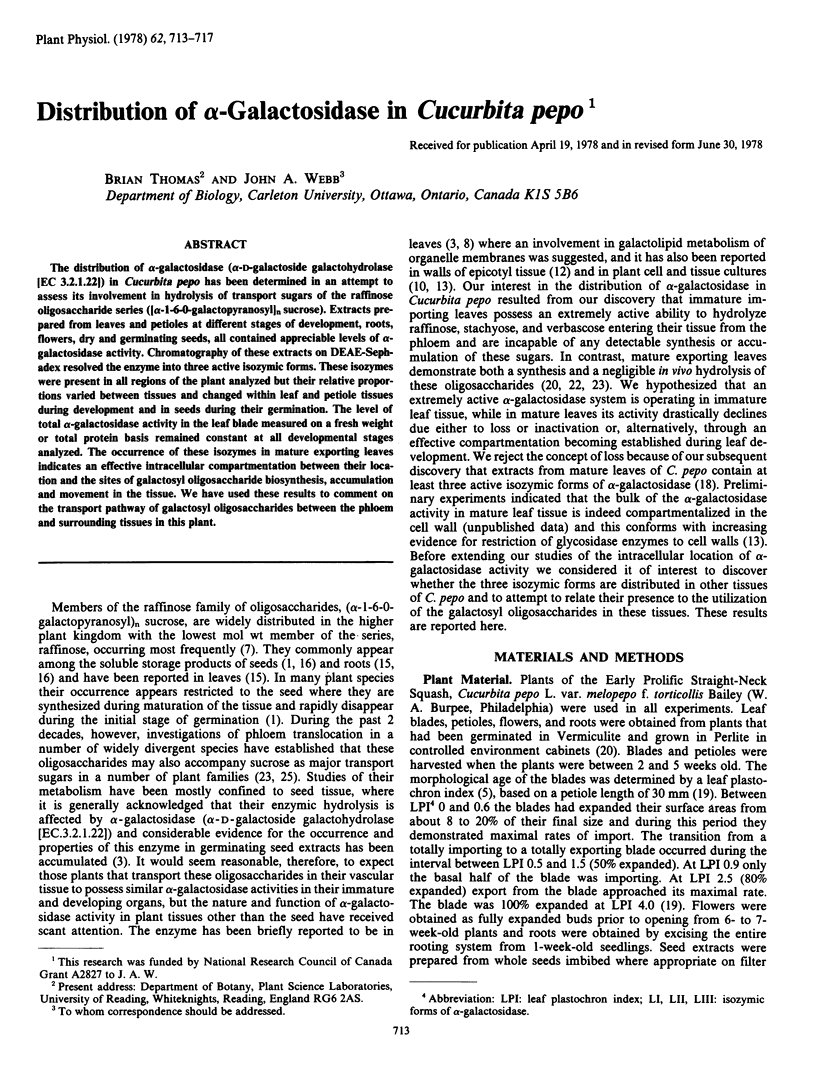
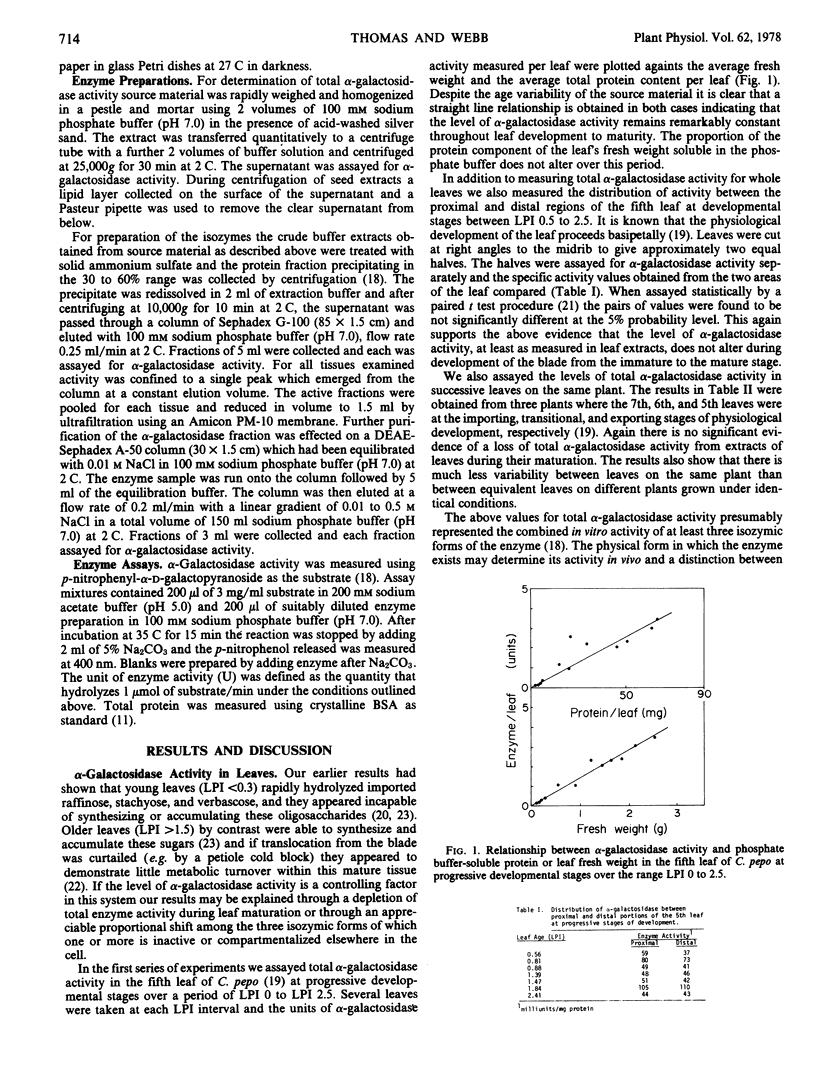
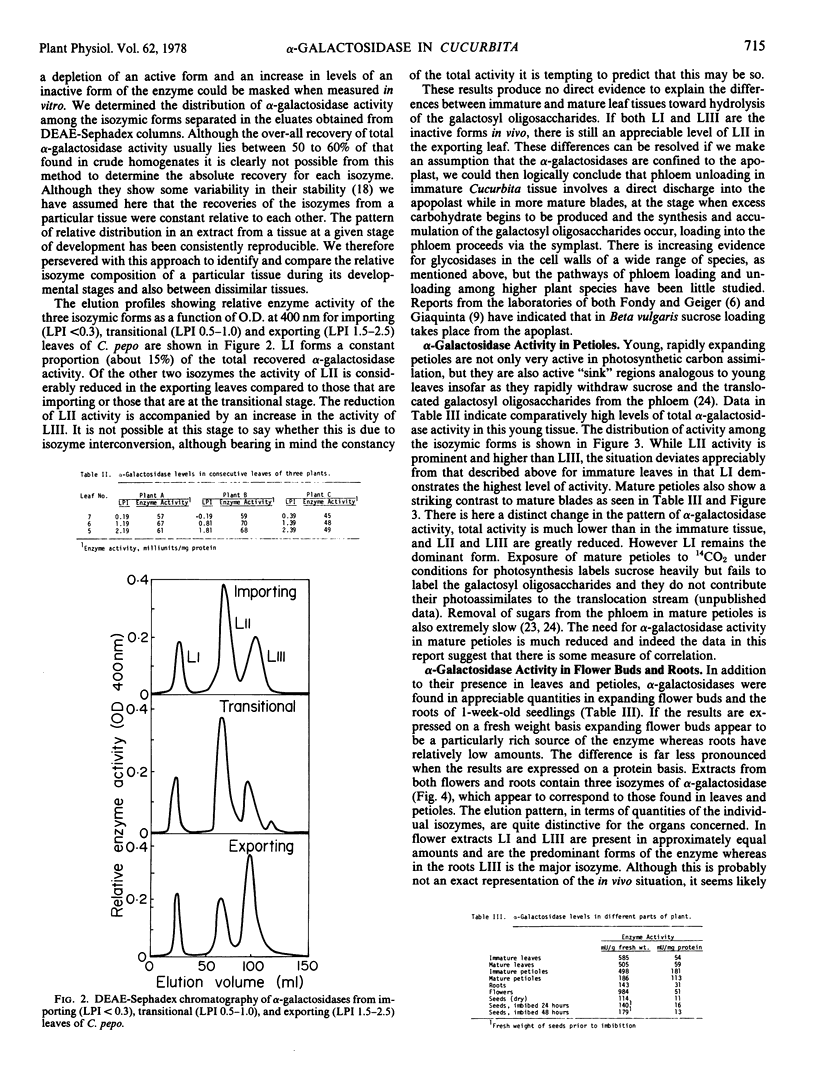
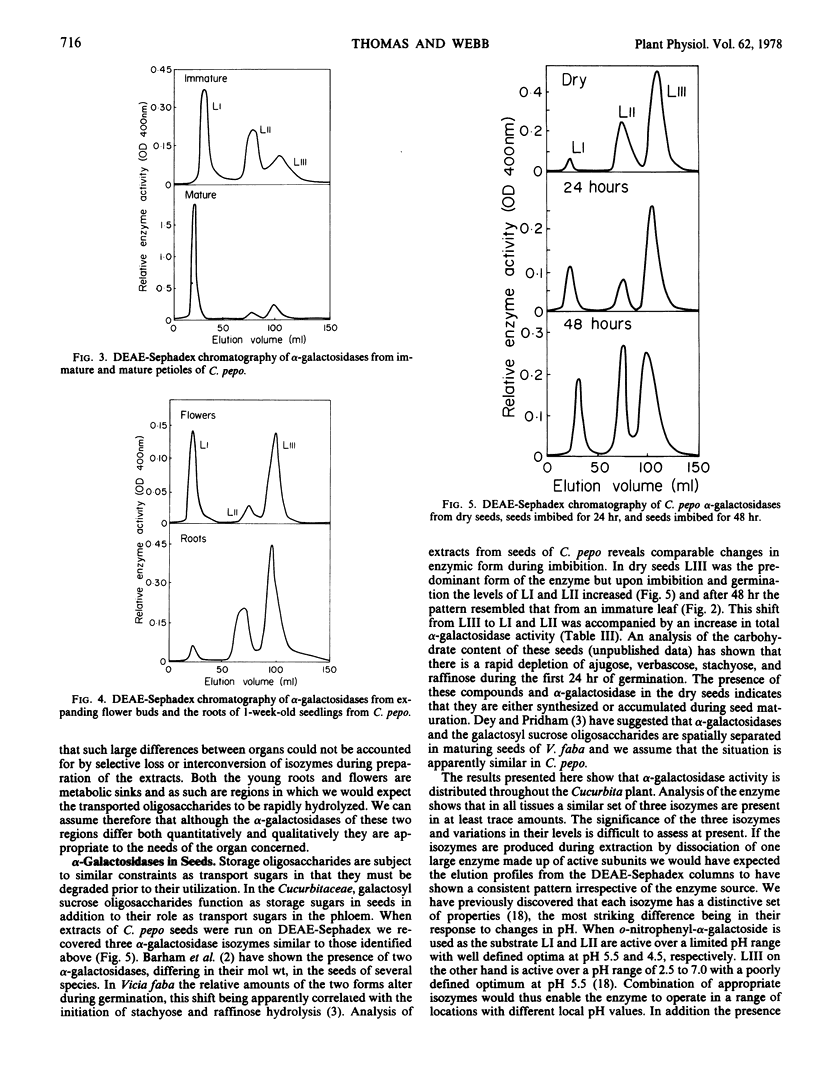
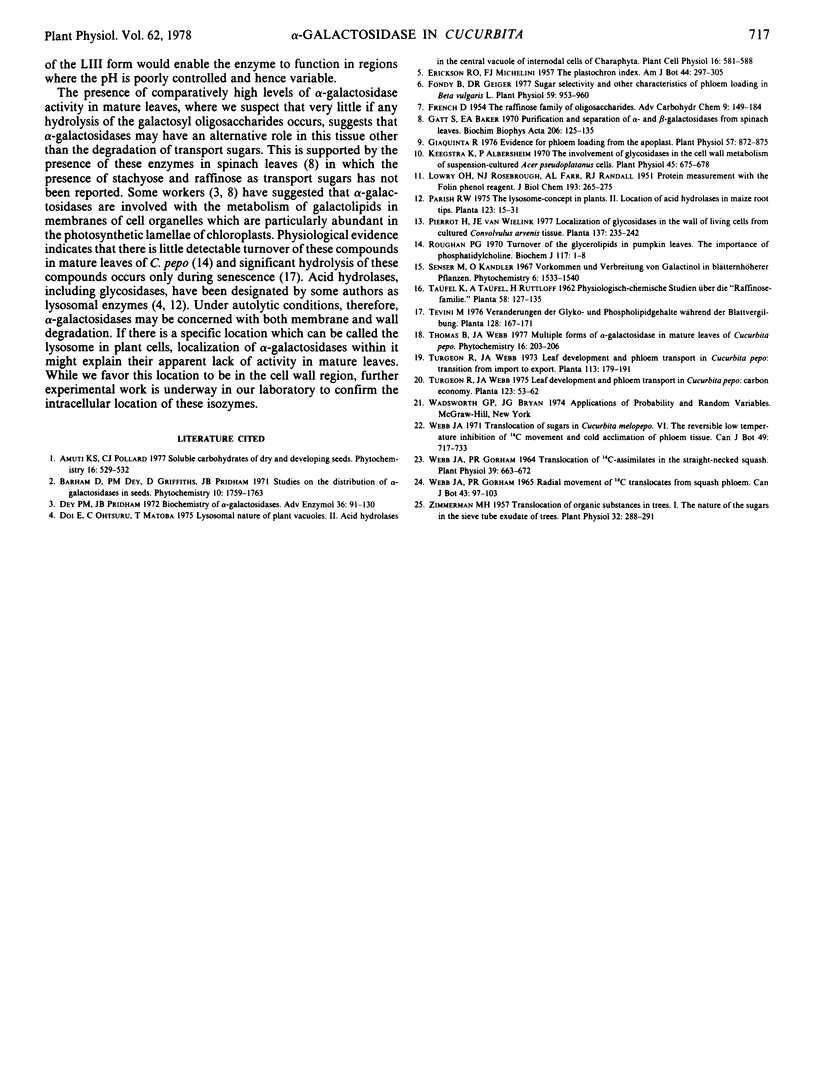
Selected References
These references are in PubMed. This may not be the complete list of references from this article.
- Dey P. M., Pridham J. B. Biochemistry of -galactosidases. Adv Enzymol Relat Areas Mol Biol. 1972;36:91–130. doi: 10.1002/9780470122815.ch3. [DOI] [PubMed] [Google Scholar]
- FRENCH D. The raffinose family of oligosaccharides. Adv Carbohydr Chem. 1954;9:149–184. doi: 10.1016/s0096-5332(08)60375-6. [DOI] [PubMed] [Google Scholar]
- Fondy B. R., Geiger D. R. Sugar Selectivity and Other Characteristics of Phloem Loading in Beta vulgaris L. Plant Physiol. 1977 May;59(5):953–960. doi: 10.1104/pp.59.5.953. [DOI] [PMC free article] [PubMed] [Google Scholar]
- Gatt S., Baker E. A. Purification and separation of alpha- and beta-galactosidases from spinach leaves. Biochim Biophys Acta. 1970 Apr 22;206(1):125–135. doi: 10.1016/0005-2744(70)90089-6. [DOI] [PubMed] [Google Scholar]
- Giaquinta R. Evidence for Phloem loading from the apoplast: chemical modification of membrane sulfhydryl groups. Plant Physiol. 1976 Jun;57(6):872–875. doi: 10.1104/pp.57.6.872. [DOI] [PMC free article] [PubMed] [Google Scholar]
- Keegstra K., Albersheim P. The Involvement of Glycosidases in the Cell Wall Metabolism of Suspension-cultured Acer pseudoplatanus Cells. Plant Physiol. 1970 Jun;45(6):675–678. doi: 10.1104/pp.45.6.675. [DOI] [PMC free article] [PubMed] [Google Scholar]
- LOWRY O. H., ROSEBROUGH N. J., FARR A. L., RANDALL R. J. Protein measurement with the Folin phenol reagent. J Biol Chem. 1951 Nov;193(1):265–275. [PubMed] [Google Scholar]
- Roughan P. G. Turnover of the glycerolipids of pumpkin leaves. The importence of phosphatidylcholine. Biochem J. 1970 Mar;117(1):1–8. doi: 10.1042/bj1170001. [DOI] [PMC free article] [PubMed] [Google Scholar]
- Tobey J. A. LAW AND LEGISLATION. Am J Public Health (N Y) 1926 Feb;16(2):203–206. doi: 10.2105/ajph.16.2.203. [DOI] [PMC free article] [PubMed] [Google Scholar]
- Webb J. A., Gorham P. R. Translocation of Photosynthetically Assimilated C in Straight-Necked Squash. Plant Physiol. 1964 Jul;39(4):663–672. doi: 10.1104/pp.39.4.663. [DOI] [PMC free article] [PubMed] [Google Scholar]
- Zimmermann M. H. Translocation of Organic Substances in Trees. I. The Nature of the Sugars in the Sieve Tube Exudate of Trees. Plant Physiol. 1957 Jul;32(4):288–291. doi: 10.1104/pp.32.4.288. [DOI] [PMC free article] [PubMed] [Google Scholar]


